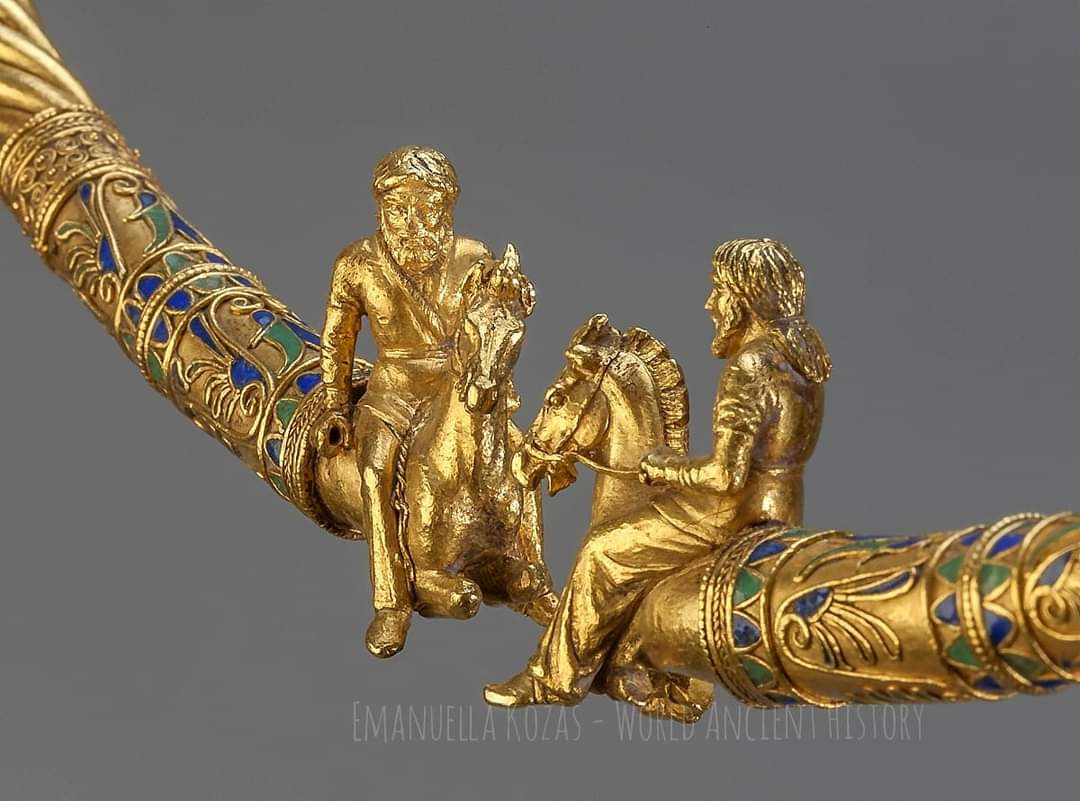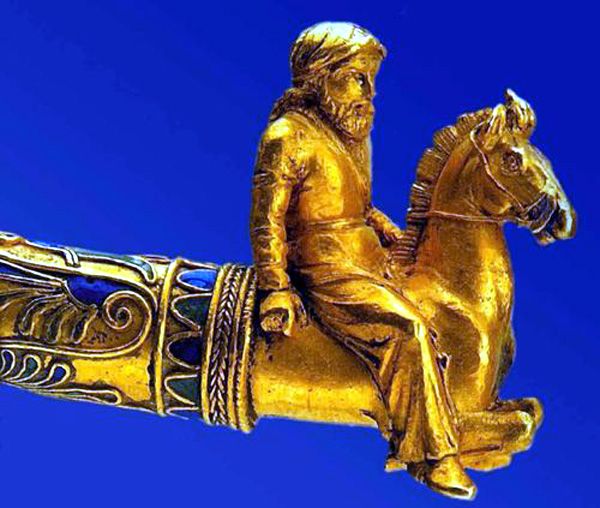Introduction
The Gold Torque adorned with Scythian Riders, dating back to the 4th century BC, is an exquisite artifact unearthed from the ancient Hellenic Bosporan settlement of Panticapeon, located in modern-day Crimea, near the ancient city of Chersonesos. This remarkable piece of jewelry not only showcases the artistry of the period but also serves as a testament to the rich cultural exchanges between the Greeks and local nomadic tribes.
Historical Context of Panticapeon
Founding and Development
Panticapeon was established by the Milesians around the late 7th or early 6th century BC on a hill known today as Mount Mithridat. The city’s strategic location along the Cimmerian Bosporus made it an essential hub for trade and cultural interaction.

Royal Residence
During the 5th to 4th centuries BC, Panticapeon became the royal residence for the Helleno-Thracian kings of Bosporus, sometimes referred to simply as Bosporus. This period marked a significant era of prosperity, as the city facilitated extensive trade and cultural exchange between Greek settlers and the nomadic tribes of the region. Economic activities flourished, with agriculture, grain trade, and the production of luxury items playing vital roles in the city’s wealth and influence.
![Scythian Torque Terminals from Royal Kurgan in Crimea, 4th. c BC [1509 x 807] : r/ArtefactPorn](https://preview.redd.it/scythian-torque-terminals-from-royal-kurgan-in-crimea-4th-c-v0-bjadydgtj69b1.png?width=640&crop=smart&auto=webp&s=37cd5c2a48c729d156d8801ba424ed75217f382e)
Decline
However, the prosperity of Panticapeon faced challenges in the 4th to 3rd centuries BC. The Sarmatian conquests of the surrounding steppes disrupted established trade routes, leading to economic decline. Moreover, competition from Egyptian grain production further diminished the city’s economic standing. Despite these difficulties, Panticapeon’s legacy as a center of cultural exchange and political power continues to hold significance in historical studies.
Significance of the Gold Torque
Craftsmanship and Artistry
The Gold Torque exemplifies the exquisite craftsmanship of the era, intricately adorned with representations of Scythian riders. These ornate pieces were not merely adornments; they served as symbols of status and power within ancient societies. The torque discovered in Panticapeon likely belonged to a member of the elite, showcasing the intricate artistry characteristic of the period.

Cultural Exchange
Artifacts such as the Gold Torque provide invaluable insights into the socio-political dynamics of the region. They illustrate how ancient trade, cultural interactions, and military influences shaped the history of Panticapeon and its surrounding territories. The fusion of Hellenic and local traditions evident in the craftsmanship of the torque reflects the complexities of identity and power in the ancient world.

Conclusion
The Gold Torque is more than just an artifact; it is a window into the past, revealing the intricate relationships and exchanges that defined the region during a time of significant historical change. As scholars continue to explore the historical context of Panticapeon and its artifacts, the Gold Torque remains a vital piece in understanding the broader narrative of ancient trade, culture, and power dynamics.

